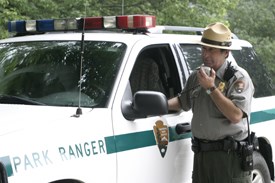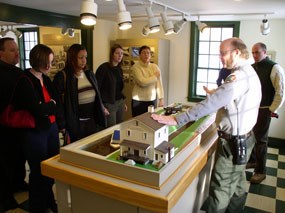|
National Park Service (NPS) rangers care for and protect some of America’s favorite places. They help visitors enjoy and appreciate the nearly 400 national parks, monuments, memorials, seashores, and historic sites across the country. Yellowstone became the first national park in 1872. For a number of decades afterward, U.S. Army soldiers protected Yellowstone and other new national parks from illegal hunting and trespassing. But as the parks became popular places to visit, a new kind of protector was needed. The parks needed workers who could do more than simply stop troublemakers. Staff was also needed to lead backcountry hikes, study wildlife, map out trails—as well as educate visitors about the nature and history of the parks. Park rangers were the answer. By the time the National Park Service was created in 1916, civilian park rangers worked in most national parks. They became the first NPS rangers. 
©SARA GUREN The Rangers of CVNP 
NPS Interpretation park rangers help visitors better understand what’s special about CVNP. Their goal is for each visitor to personally connect with the park, learn to appreciate it, and want to preserve it. Interpretation park rangers lead bird-watching hikes or treks that explore canal history, teach fun classes to kids about animals or the Cuyahoga River, plan special historical train tours, and even create web pages. The rangers of CVNP do not work alone. Park scientists, office workers, maintenance staff, and managers all help the park run smoothly. More than 2,000 volunteers also lend a hand at CVNP. Volunteers do everything from patrolling the Towpath Trail or presenting programs dressed in historical costumes to removing pest plants. |
Last updated: April 21, 2020
